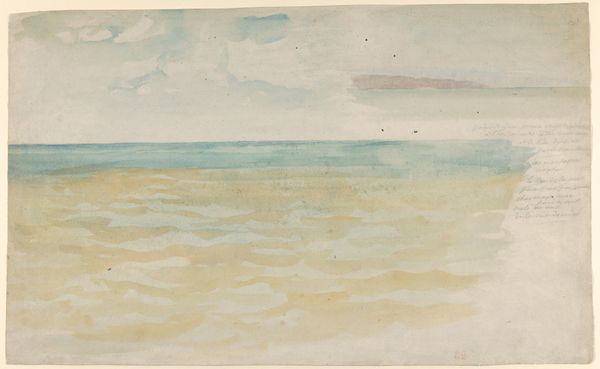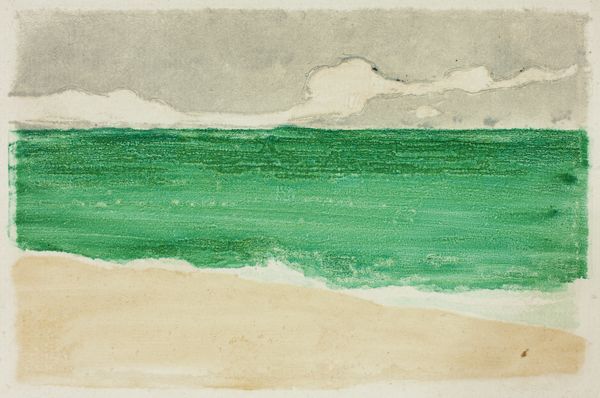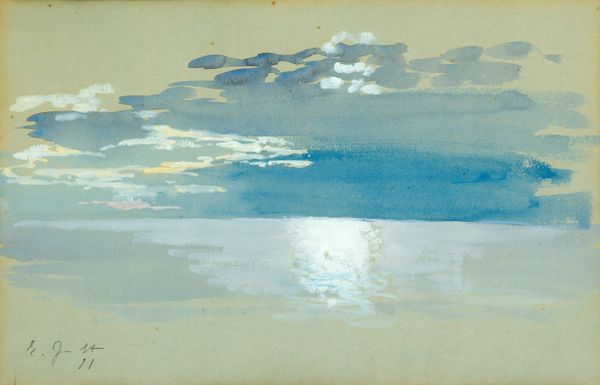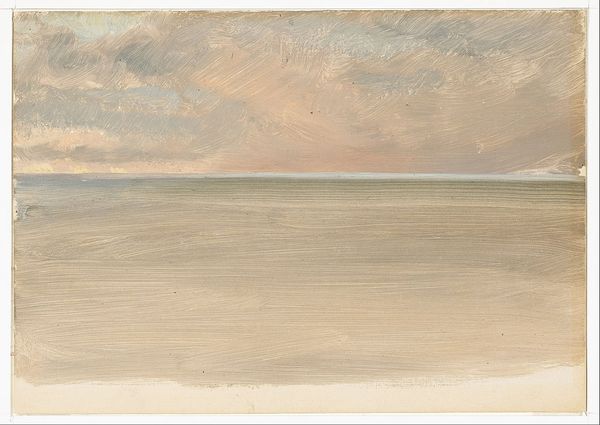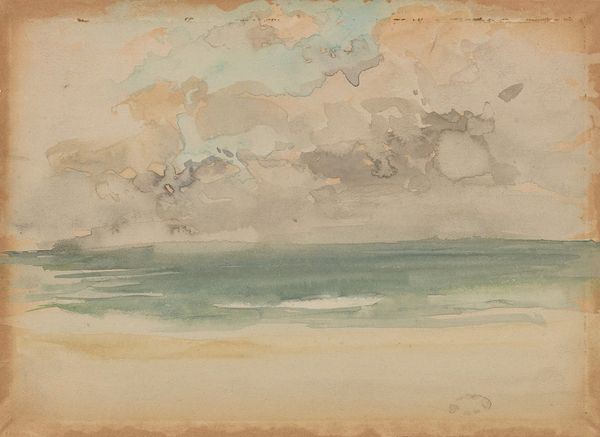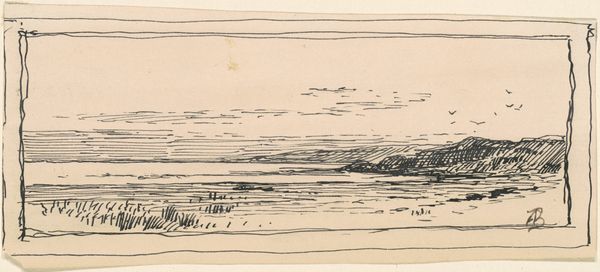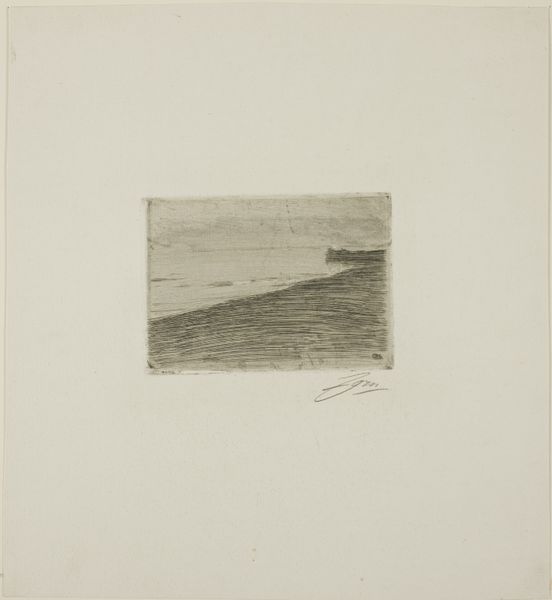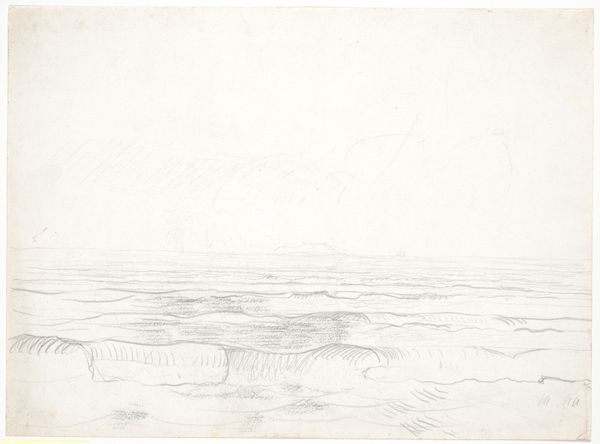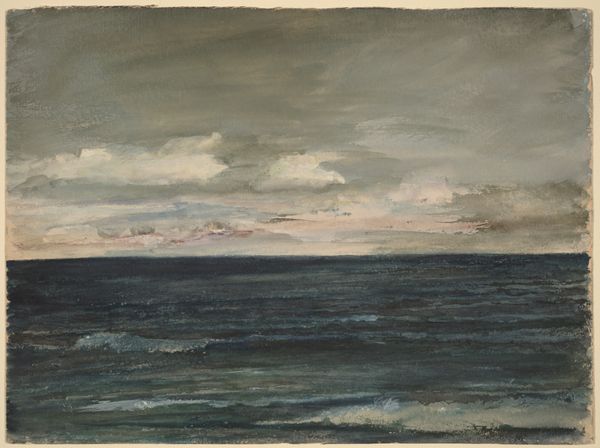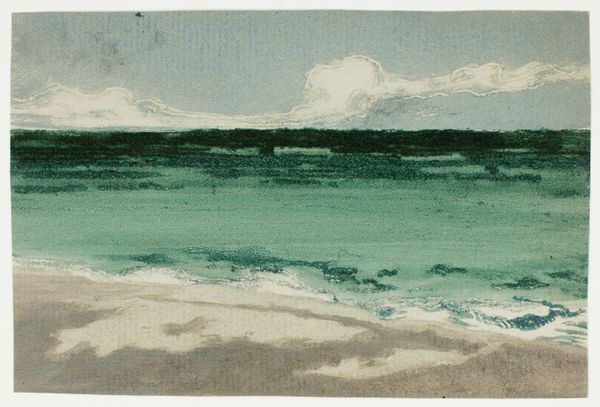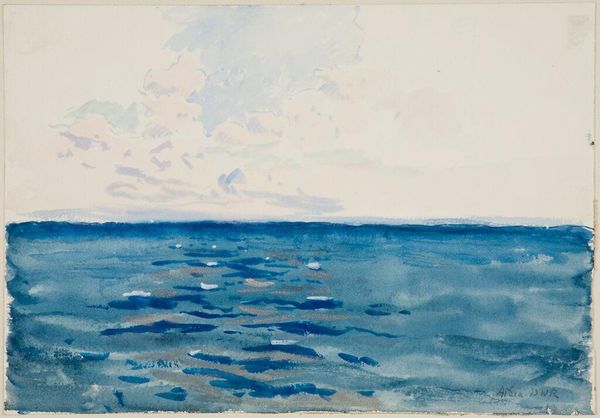
Dimensions: 43 × 140 mm (image); 101 × 150 mm (sheet; platemark only partially visible)
Copyright: Public Domain
Curator: What we have here is Theodore Roussel's "The Sea at Bognor" from 1895. It’s watercolor and touches of print on paper, currently held at The Art Institute of Chicago. Editor: Wow, my first impression is... minimalist Zen. It's so pared down; it's practically a sigh on paper. Does anyone else see that simplicity, or am I just having one of those days? Curator: Well, simplifying things, getting to the essence... it was definitely a strategy, and Bognor itself, at the time, was really transitioning, economically and socially, a place caught between its agrarian past and aspirations of becoming this fashionable seaside resort. This work, in a way, really embodies that liminal state. Editor: Liminal is absolutely the word. It feels like a moment of reflection between breaths. Those horizontal strokes—the gradations of greens and blues. How do those simple color fields manage to evoke such a powerful sense of depth, or vastness? Curator: He had a real knack for capturing atmosphere, didn't he? And you know, watercolours might seem 'light' to some, but they were quite loaded during that era. Think of artists like Turner, radically transforming landscapes, commenting on shifting social structures, ideas of industrialism and colonialism. Even with its lightness, it comes from a lineage that carried weight. Editor: Absolutely. There’s something inherently political about landscape art – about who has access to the land, who gets to represent it. Was Roussel actively engaging in that dialogue? Curator: Roussel often found himself aligned with avant-garde circles challenging established artistic norms. He pushed boundaries of representation. Editor: You know, seeing it again, I find myself drifting. Just looking at it—the rhythm of the washes almost mimics the tides. It invites contemplation, even escape. Curator: I think that’s so true! The essence of capturing fleeting experience – an artist seeing the world, distilling a personal, internal experience into colours on a paper. It's profoundly meditative. Editor: Precisely, capturing, with such simplicity, that universal experience that unites our human vulnerability with the sublime indifference of the natural world! That’s why this one really sticks with me.
Comments
No comments
Be the first to comment and join the conversation on the ultimate creative platform.
